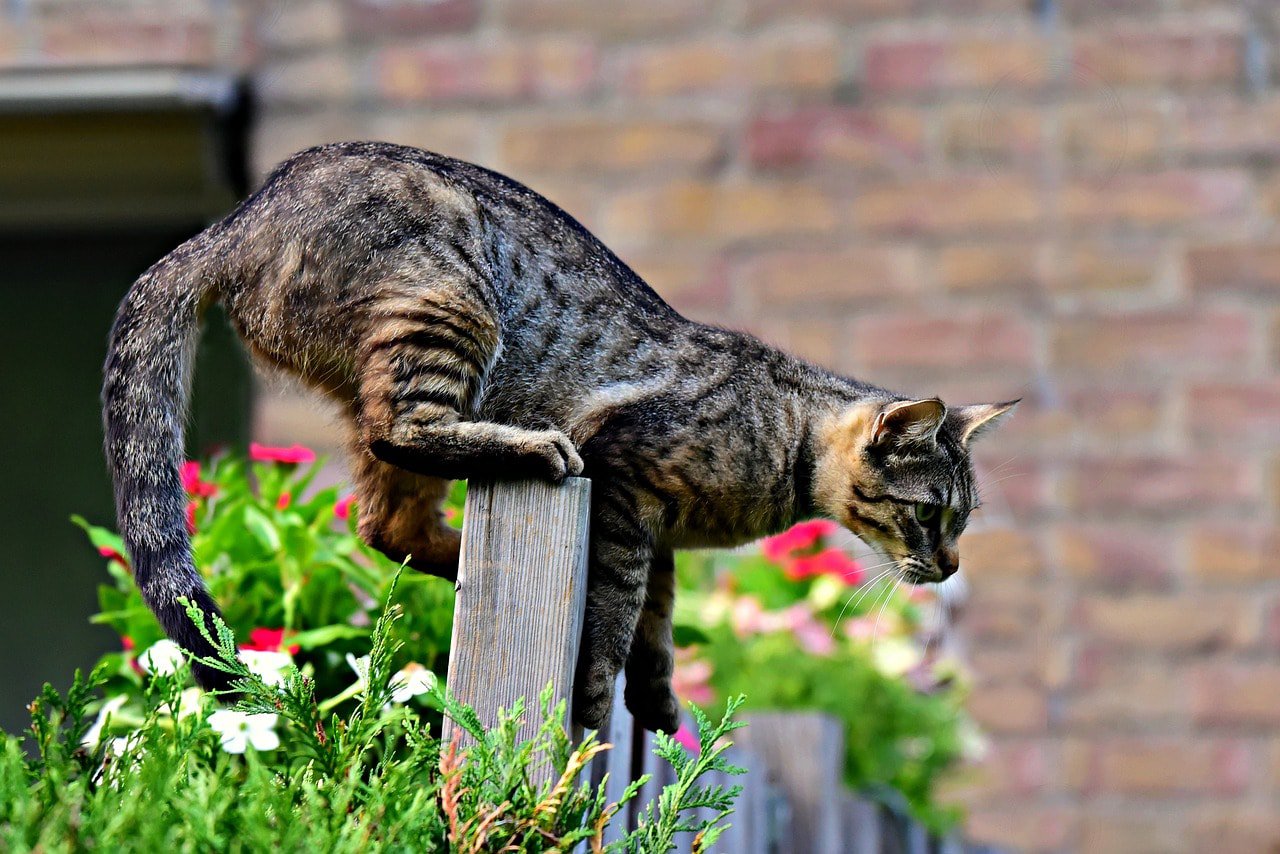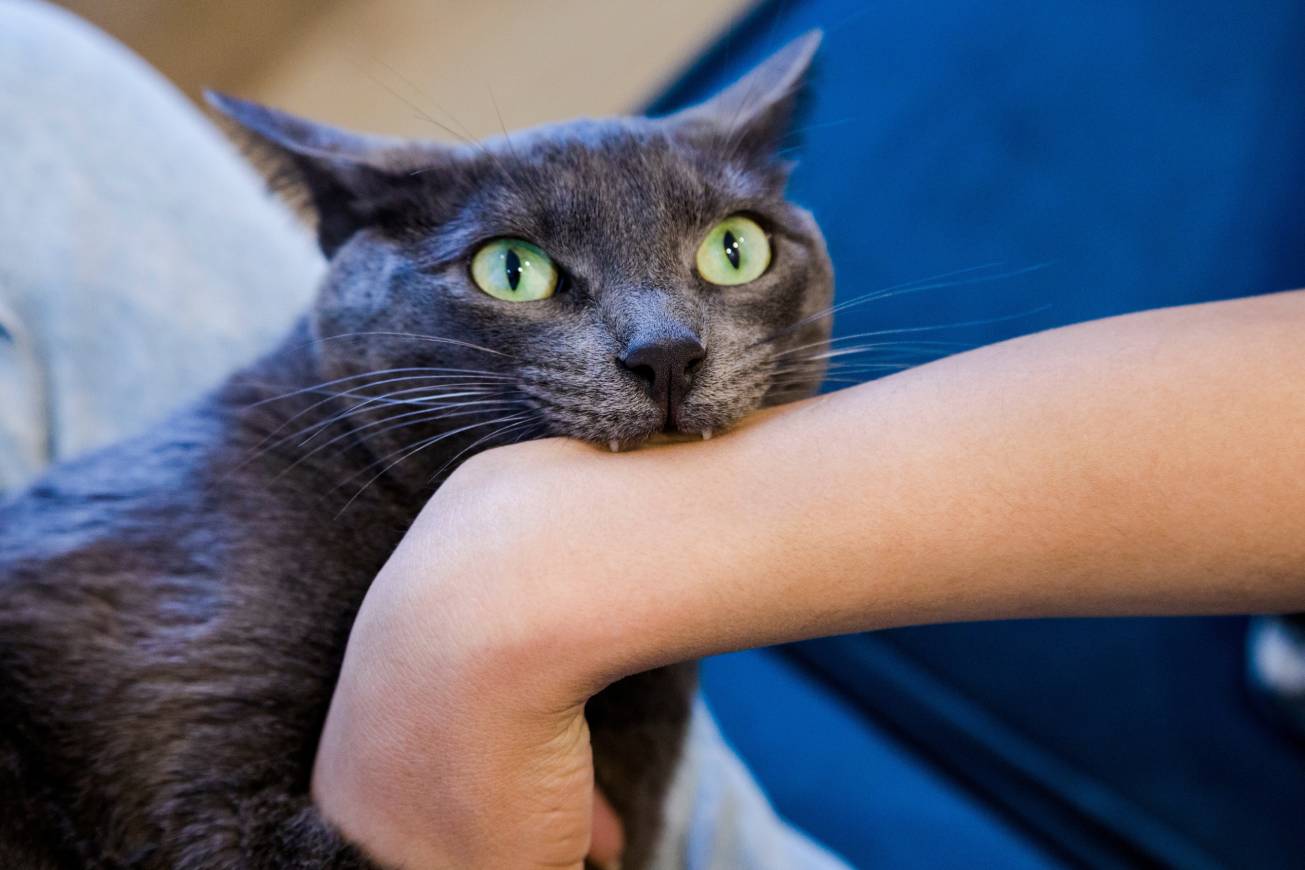VET APPROVED

The information is current and up-to-date in accordance with the latest veterinarian research.
Learn more »It can be tough to find a safe balance as a cat parent. Keeping your feline inside the house is the best way to keep them safe and healthy. But sometimes, your kitty wants to get some sun and explore what the outdoors offers. If your yard has a fence, there are a few things that you can do to fully cat-proof the fence and make it safe for your kitty to spend time outside. Here are several ideas worth considering.

The 14 Tips to Cat-Proof a Fence
1. Utilize Mesh Wire
Mesh wire can be installed on the top of your fence to keep your kitty in your yard. Whenever your cat tries to climb on the mesh, it should bend toward them and put them off their balance. As a result, they will have a hard time trying to scale the mesh wire. You can use screws to install the mesh so you can easily make adjustments as time goes on.
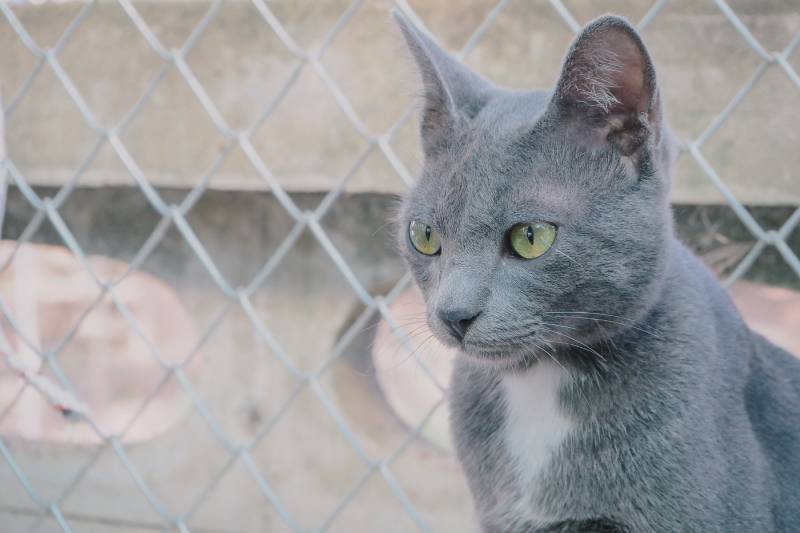
2. Incorporate an Overhang
You can always install an overhang that hangs toward the interior of your yard to keep your kitty safe. Use fencing, wood, or any other material to create a small ledge that curves inward toward your yard. Then, attach it to the top of your fencing with screws or nails. Your cat should not be able to climb over it.
3. Install Chicken Wire
You can use chicken wire to keep your cat in your yard by installing about a foot of it on your fence so it points toward the sky. If your cat tries to climb onto the chicken wire, it will fold under their weight, making them jump back into your yard again. If your cat jumps on the chicken wire often, it will likely start to bend toward the interior of the yard and become less attractive to climb on overall.
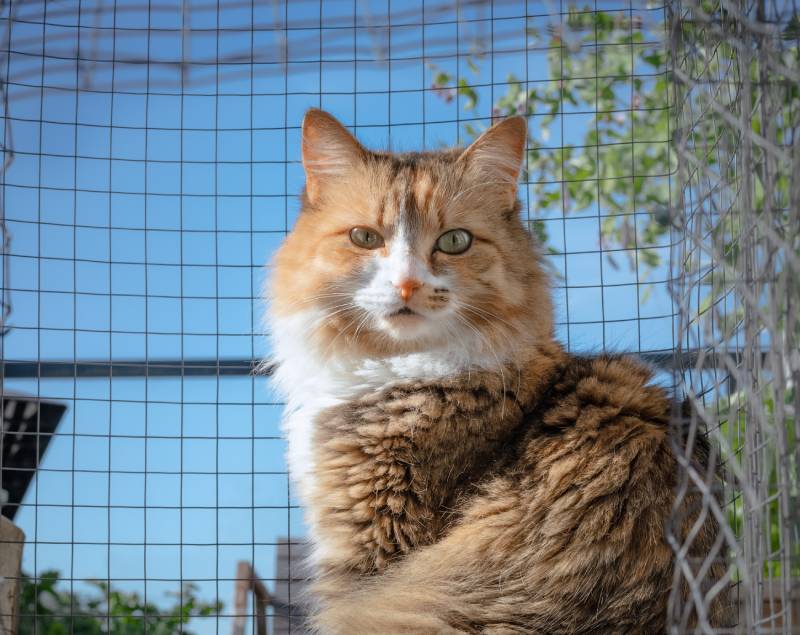
4. Consider Curved Fencing
If you can find curved fencing at your local home improvement store, you can install it to curve toward your yard and keep your kitty from climbing out. If they try, they will find themselves upside down, likely making them uncomfortable enough to stay away.
5. Install a Spinner on Top
One option is to put a spinner top on your fence. The idea is to install a plastic or metal tube that will roll if your kitty tries to jump on or over it. The rolling motion will make it impossible for your cat to get over the fence. You can paint the spinner top any color that you’d like to match your fence, your home, or even your garden.
6. Invest in PVC Pipe
You can put a PVC pipe spinner anywhere on your fence. If you don’t want your kitty to climb up more than half the height of your fence, install the PVC roller at the halfway mark. It’s that simple! A PVC roller can also be installed on the top of a fence.
7. Reinforce the Bottom
The top of your fence is not the only thing you must worry about when trying to cat-proof the fence. You also must focus on the bottom. Installing chicken wire or mesh along the bottom of your fence line is a good idea for more security overall. Chances are that the extra barrier will keep your kitty where they are supposed to be.
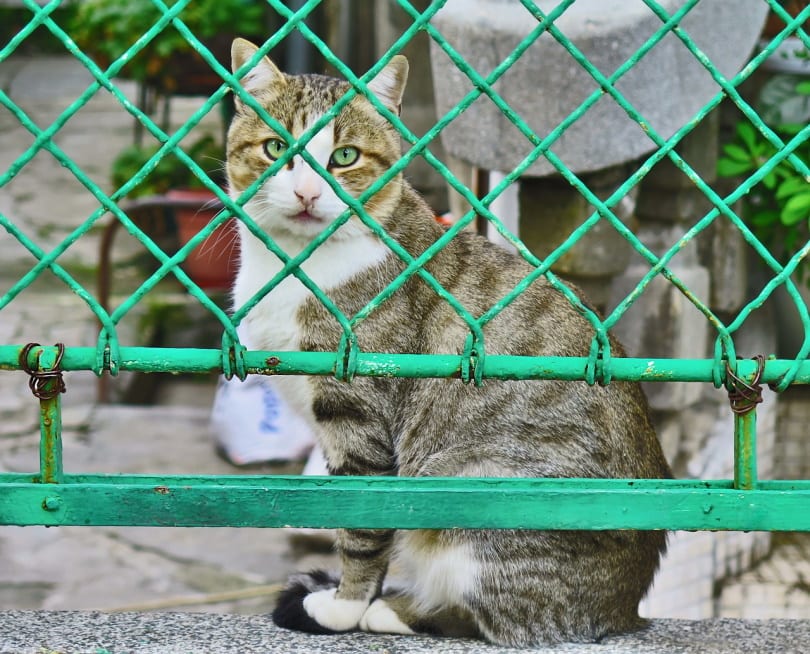
8. Build an Outdoor Catio
If you don’t want to be bothered with cat-proofing your entire yard, you can always build an outdoor catio. This will allow your kitty to feel like they are spending time outside, but they will be in a safe space where no predators can get to them. The catio will also ensure your kitty never runs away, gets lost, or is stolen from your property.
9. Cover the Empty Space With Netting
If you are serious about making sure your cat does not escape your yard, it is a good idea to cover the entire space with netting, from fence line to fence line, to create a bubble. You’ll still get sun, rain, and wind, but your cat won’t be able to escape, no matter how hard they try. You can use poles and other wooden structures to keep the netting high enough in the air that humans can enjoy the space, too.
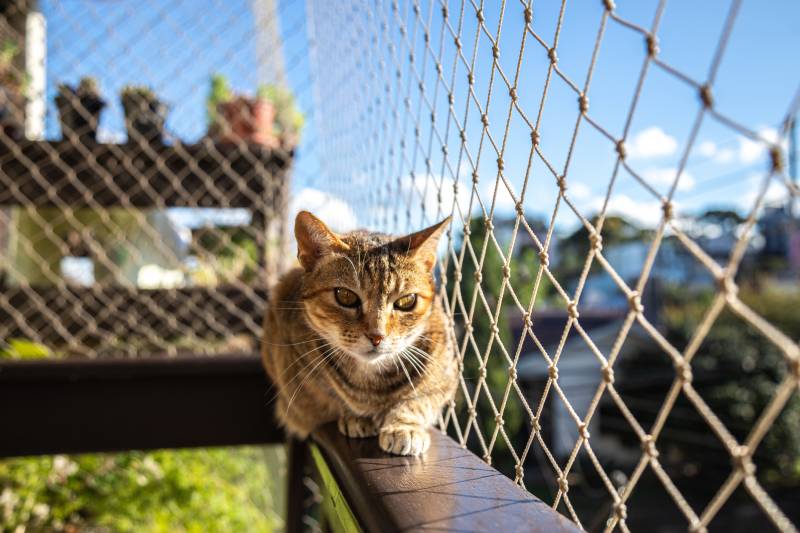
10. Fill the Bottom Gaps
Sometimes, fencing won’t stop your kitty from escaping. Therefore, it’s a good idea to fill empty spaces between the ground and the bottom of your fence with gravel, mulch, or other material that will make it tough for your kitty to escape. Small rocks and dirt will also work.
11. Cover the Tree Trunks
One way to cat-proof your fence is to cover your tree trunks with plastic or metal so your kitty can’t climb. If a tree near your fence line is easy to scale, your cat may be able to climb it and then jump over the fence, even if extra material or a roll bar is installed on it. If your cat cannot climb the tree, they will be less successful getting over the fence.
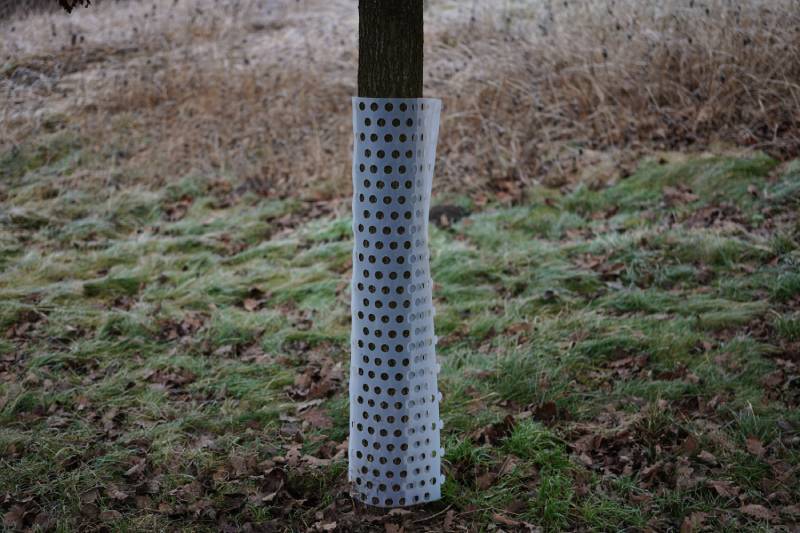
12. Build a Walkway Around the Perimeter
If you cannot trust your kitty to spend time outdoors alone, you can use 1×1 lumber and netting or chicken wire to build a catwalk around the perimeter of your fence. Use the fence as one side of the walkway and plywood as the base. Then, cover the catwalk with netting or chicken wire to ensure your cat can’t get out. You can put your cat on the catwalk yourself or attach one end to a window of your home.
13. Always Supervise Your Cat
If all else fails, but you want your kitty to spend time outdoors, you can always go out there with them and supervise them. You can put a harness and leash on your kitty when you first spend time outside together. Once your cat gets used to their confines, you should be able to let the leash go and just hang out in the yard without any worries about them running away.
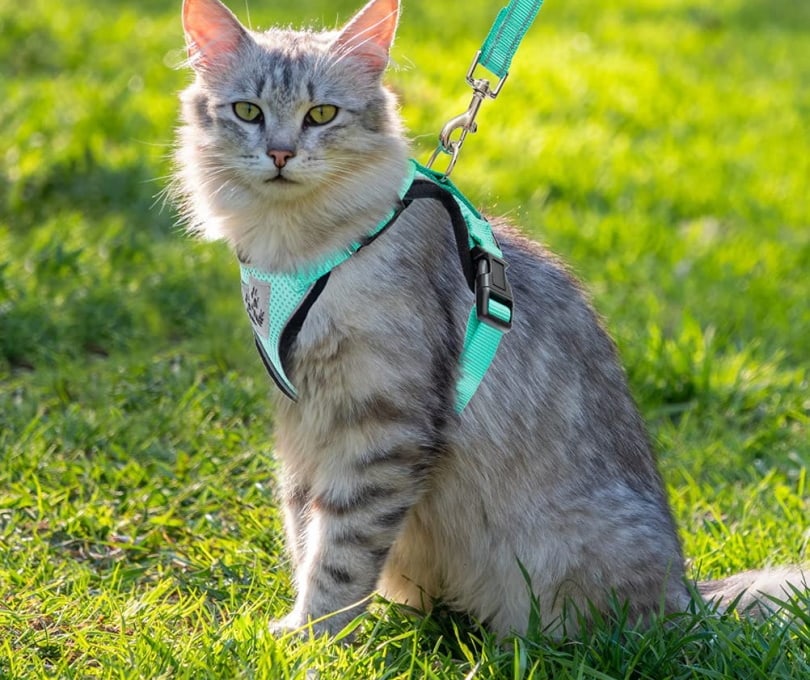
14. Keep Your Cat Indoors
Sometimes, allowing a cat to spend time outside doesn’t work out. Some cats will do anything to escape and find another cat to mate with. If that is true for your kitty, you may just need to keep them indoors. You can bring the outside in by incorporating cat-friendly plants, scratching posts, and climbing trees in your household environment.

Conclusion
It is not always a good idea to let a cat spend time outdoors, but if you want to provide your kitty with a safe outdoor space, there are several ideas for you to consider! Incorporate just one or implement several of our suggestions to enhance your cat’s quality of life while maintaining your peace of mind. The measures that you take will depend on your unique situation.
Featured Image Credit: MabelAmber, Pixabay
Contents
- The 14 Tips to Cat-Proof a Fence
- 1. Utilize Mesh Wire
- 2. Incorporate an Overhang
- 3. Install Chicken Wire
- 4. Consider Curved Fencing
- 5. Install a Spinner on Top
- 6. Invest in PVC Pipe
- 7. Reinforce the Bottom
- 8. Build an Outdoor Catio
- 9. Cover the Empty Space With Netting
- 10. Fill the Bottom Gaps
- 11. Cover the Tree Trunks
- 12. Build a Walkway Around the Perimeter
- 13. Always Supervise Your Cat
- 14. Keep Your Cat Indoors
- Conclusion
